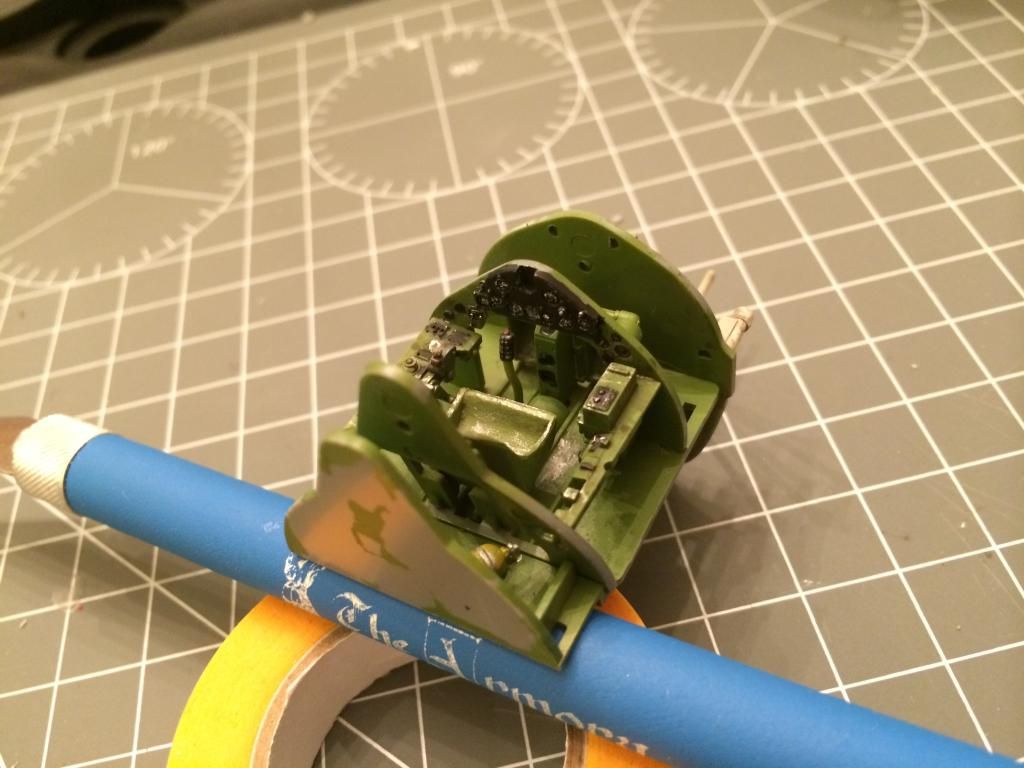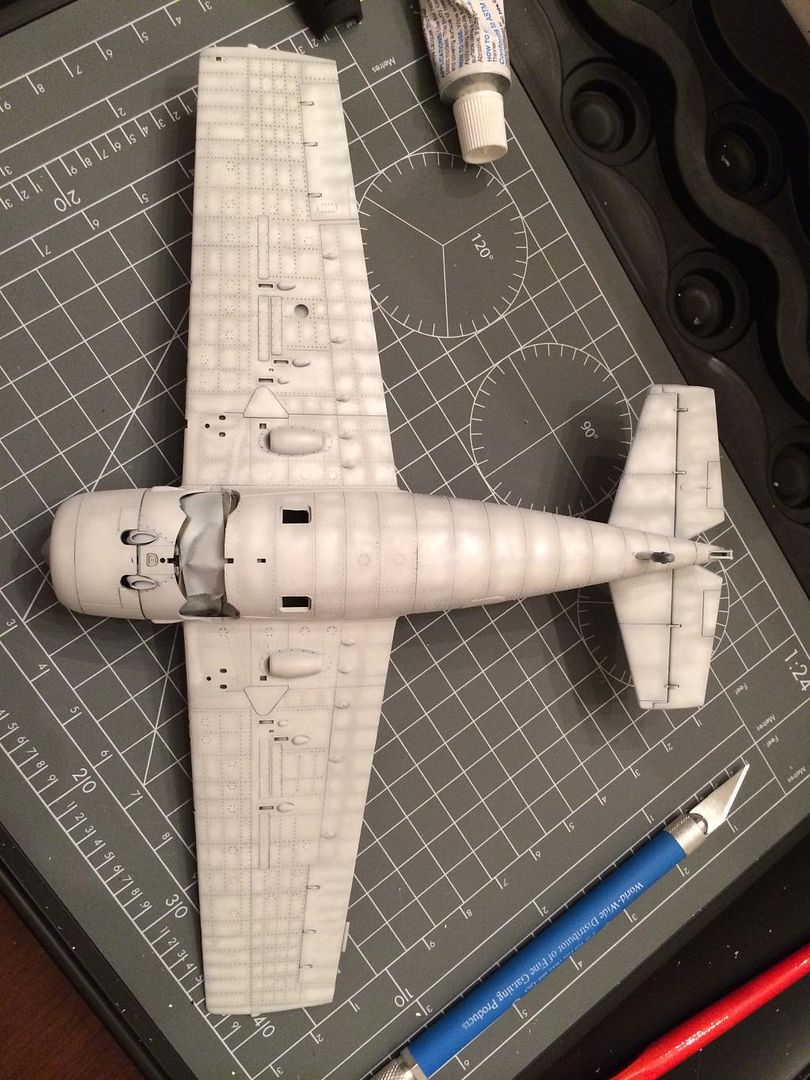I picked up the 1:48 Tamiya F4F-4 for a pretty good deal and decided to try some new techniques on it. I have to say, this is one of the best kits I have ever seen. It fits amazingly well, and I didn't use a single bit of putty on it so far (and I'm already painting it). However, the Grumman engineers saw fit to put 9,756,334,224,211 rivets on the Wildcat, and Tamiya apparently felt compelled to include all of them.
What that means for me is that my new favorite painting method, which I found on doogsmodels.com, is incredibly tedious (you'll see what I mean in the last photo of this post).
First, the cockpit. Tons of detail here, and it's a shame that the barrel-shaped fuselage allows so little of it to be seen. Oh well, c'est la vie.

Next up is the wheel well. I haven't stuck my head in a real one, but this seems like a lot of nice detail for something else that's essentially invisible once completed (but GREAT engineering on the landing gear by Tamiya).

Next up is the engine. Fit was fantastic here as well, and the back of the engine is included, as it sticks into the wheel bay. I didn't stress about detailing the engine, and even though photos I saw showed the wiring to be black, I wanted to pick it out with metallic brown.

Next up came step one of the black basing method - making my Wildcat into a night fighter for a day. It's Tamiya acrylic. Usually I use Tamiya acrylics for everything, but I want to try out salt weathering and have read that this can stain Tamiya paints, so I am using Model Master enamels for the color coats (I figure if my Tamiya acrylics held up under Alclad on another model, MM won't hurt them).

After letting that cure for 36 hours, I went ahead and airbrushed MM light gray on the underside. I let it dry today and just spent the past hour hitting the panel centers with a 50/50 mix of light gray and insignia white.

As you can see, there are a lot of little panels on this one (well, not technically panels, but areas bordered by rivets). I set the spraying pressure to about 8 PSI so I could get really close. I have a Badger SOTAR 20/20, and the paint cup is pretty small (I had to refill it a couple of times on the larger spray projects), but the detail ability that allowed me to get in that close on the smaller panels makes it all worth it.
Next step is blending with a highly thinned coat of the original base color so it looks more like an airplane and less like cubism.
-BD-